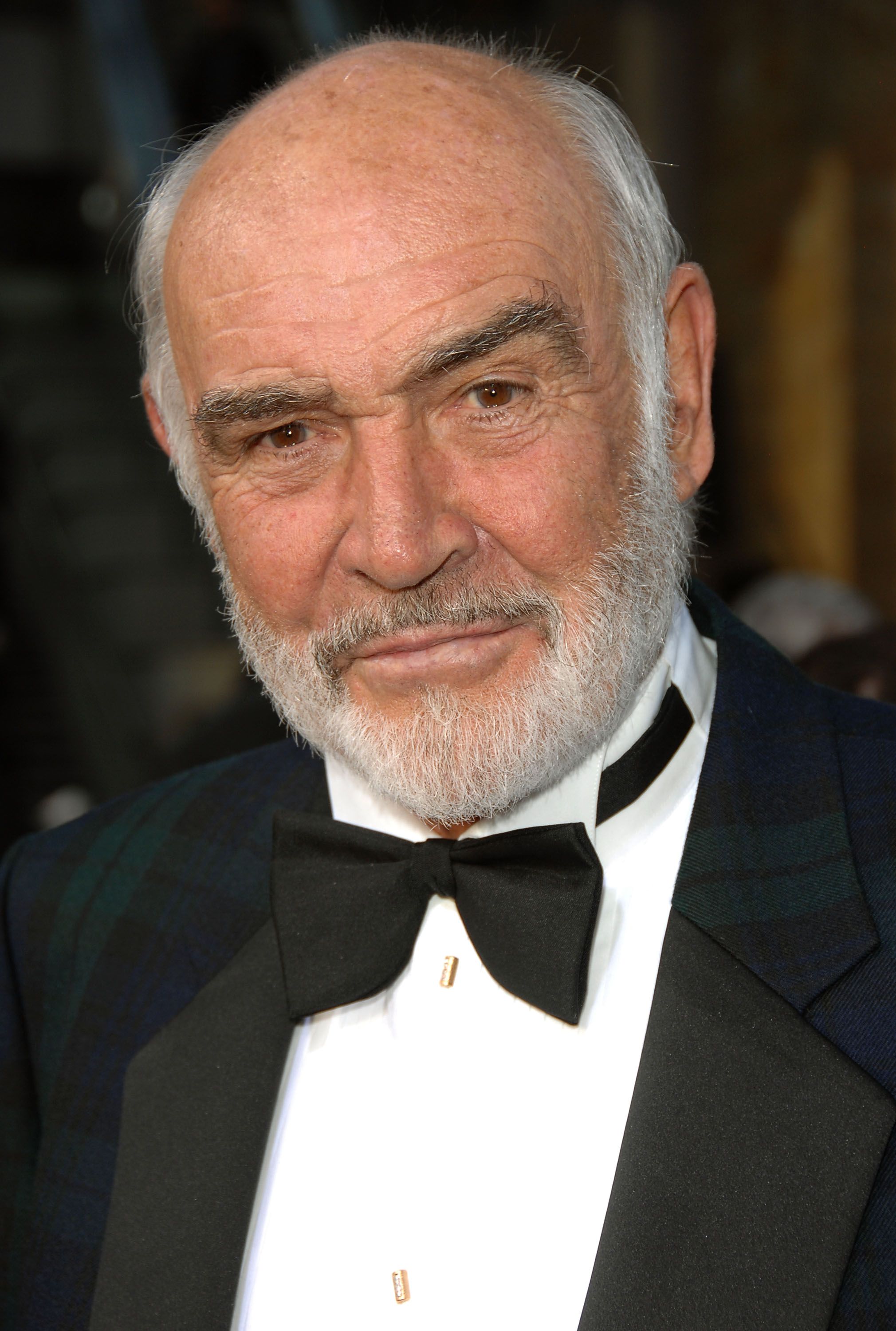Sean Cody Sean - Unpacking A Name's Nuances
Have you ever stopped to think about the little quirks in our everyday language, the way words come together, or even how names get their start? It's really quite fascinating, you know, when you consider the layers of meaning and history wrapped up in something as simple as a name. We often use words without much thought, but sometimes, a closer look at phrases like "sean cody sean" can open up a whole new way of seeing how we communicate.
There are so many tiny rules and unspoken customs that shape how we speak and write, sometimes without us even realizing it. From how we say a name to where we place ourselves in a list of people, these small details actually tell a bigger story about language and how it works. It's like a quiet dance that happens every time we open our mouths or put pen to paper, or really, fingers to keyboard.
This exploration is going to take a closer look at some interesting language points, all tied together by the idea of "sean cody sean." We'll talk about where names come from, some common mix-ups with words, and even why certain short forms exist. It’s pretty interesting, in a way, to see how these bits of language fit together and influence how we understand each other.
- Dj Envy Halloween 2024
- Melek Azad Ifsa
- Is Yuki Chiba Gay
- Kit Connor Leak
- Is Uzo Aduba Related To Whoopi Goldberg
Table of Contents
- The Story of a Name - Sean Cody Sean's Roots
- What's in a Name - The Sean Cody Sean Connection?
- Do We Always Put Ourselves Last - Sean Cody Sean and Social Graces?
- Courtesy in Words - A Sean Cody Sean Perspective
- When Does "Myself" Make Sense - Sean Cody Sean's Emphasis
- Adding Punch - The Sean Cody Sean Way to Stress a Point
- Why Do Names Shift and Change - Sean Cody Sean's Linguistic Twists?
- The Unseen Forces Behind Name Changes - A Sean Cody Sean Look
- How Do We Use "He's" Properly - Sean Cody Sean's Short Forms?
- Getting the Short Version Right - A Sean Cody Sean Guide
- Punctuation Puzzles - Sean Cody Sean and the Comma Question
- Making Sense of Sentences - The Sean Cody Sean Approach to Clarity
The Story of a Name - Sean Cody Sean's Roots
The name "Sean," which many of us hear quite often, actually has its roots deeply connected to the English name "John," you know, sort of like a special Irish take on it. It’s a way of saying "John" but with an Irish sound to it, which is rather neat when you think about it. This process, where a name from one language gets changed so it can be spoken easily in another, happens quite a bit across different cultures. It’s almost like the name puts on a different coat to fit into a new place.
When we look at "Sean," we see how it's written in Irish, sometimes as "Seán" or "Séan," which helps people who speak Irish say it just right. This isn't just about changing letters; it's about making sure the sounds fit the language. For example, if you think about the way a certain well-known actor named Sean, like Sean Connery, speaks, you can hear that particular "sh" sound at the start. That sound is a pretty good example of how the "se" at the beginning of his name is meant to be said, and it gives us a hint about the pronunciation of many Irish and Scottish Gaelic words, too.
What's in a Name - The Sean Cody Sean Connection?
So, what does this tell us about the "sean cody sean" idea? Well, it shows us that even a simple name carries a lot of history and how language works. The way a name is written or spoken can give us clues about its background, and its journey through different languages. It’s not just a label; it's a small piece of a much bigger language story. This connection helps us appreciate the sounds and spellings that might seem a little different at first glance, but actually make perfect sense when you know their origin.
- My Ducks In A Row Meme
- Juliana Duque Funa
- Ameshia Cross Nude
- Taylor Swift Cumtribute
- Bryan Silva Onlyfans
| Original Language Connection | An Irish version of the English name "John" |
| Irish Spellings | Often seen as Seán or Séan |
| Typical Pronunciation Start | Often sounds like "sh" at the beginning, similar to "Sean Connery" |
| Linguistic Process | A transliteration, meaning it's adapted to fit Irish sounds |
| Common in | Irish and Scottish Gaelic words often share similar "s" followed by a vowel, pronounced "sh" |
Do We Always Put Ourselves Last - Sean Cody Sean and Social Graces?
Have you ever wondered about the best way to say "my wife and me" or "my wife and I"? It’s a common little puzzle, isn't it? The general advice, which is pretty much a matter of good manners, suggests that when you're listing yourself with others, you should typically mention yourself last. This isn't a strict rule of grammar as much as it is a point of courtesy, a way of showing respect to the other person in the sentence. It’s like letting someone else go through a door first; it’s just a nice thing to do, you know.
So, if you’re talking about going to a game with someone, you might say, "They went to the game with Sally and me." Or, if you're talking about a seafood dinner collaboration, you'd probably say, "My wife and I's seafood collaboration dinner." This approach simply puts the other person first, which is often seen as a polite way to speak. It’s a small detail, but it does make a difference in how your words come across, and people usually notice these things, or so it seems.
Courtesy in Words - A Sean Cody Sean Perspective
When we think about "sean cody sean" and how we present ourselves in language, this idea of courtesy really stands out. It’s about more than just getting the words in the right order; it’s about the feeling you want to create. Putting yourself last in a list of names or pronouns is a simple gesture that shows you're thinking of others. It’s a subtle nod to social connection, making your speech a bit more welcoming. This kind of thoughtful language use helps build good relationships, which is pretty important, actually, in any kind of talk.
It can feel a little tricky sometimes to figure out the "proper" way to phrase things, especially when it involves yourself and another person in a sentence where you can't just use a simple "our." The core idea remains that placing yourself last is generally seen as the more polite option. It's a way of giving a little bit of spotlight to the other person, showing that you value their presence in the conversation. This small choice, you know, makes a big impact on the overall feel of what you are saying or writing.
When Does "Myself" Make Sense - Sean Cody Sean's Emphasis
Now, let's talk about words like "myself." Sometimes, people use "myself" when "me" or "I" would also work, and it can seem a little confusing. However, using "myself" and other similar words, like "yourself" or "himself," can actually be a very normal way to add a bit of punch or stress to what you're saying. It's like putting a little extra weight on a word to make sure it truly stands out. This is a common part of how English works, and it's not about being wrong; it's about being clear about who you mean.
For instance, if someone says, "I personally handled that," they might also say, "I myself handled that." The second version really puts the focus on the speaker, showing that *they* were the one who did it, not someone else. It's a way of making sure there's no doubt about who was involved. This kind of usage is perfectly fine when you want to highlight the person doing the action. It's a very direct way to get your point across, so it seems.
Adding Punch - The Sean Cody Sean Way to Stress a Point
Thinking about "sean cody sean" and the way we use language for impact, the reflexive pronoun "myself" offers a neat tool. When a speaker wants to truly make it clear that they, and no one else, were involved in something, they might use "myself" to put that extra bit of stress on their personal involvement. It’s about making a statement that resonates, ensuring the listener or reader understands the personal connection to the action. This adds a certain strength to the message, which is quite useful, you know, for getting a specific idea across.
This particular way of speaking or writing isn't about being overly formal; it's about being very precise with your meaning. It’s a speaker's choice to place extra importance on the fact that they were personally one of the people involved. It is, in a way, a verbal underline. So, next time you hear someone use "myself" in a sentence where "I" or "me" might also fit, consider if they are trying to add that special layer of emphasis. More often than not, that’s exactly what’s happening, and it’s a smart move, really, in making their words hit home.
Why Do Names Shift and Change - Sean Cody Sean's Linguistic Twists?
Have you ever wondered why someone named Robert might sometimes be called Bob, or why John can become Jack? It’s a pretty common thing, isn't it, for names to have these shorter, friendlier versions? This practice of changing English names, or having different forms for them, has a history and a reason behind it. It's not just random; there's often a bit of language evolution or even affection involved. It’s a fascinating part of how language adapts and grows over time, you know, almost like a living thing.
These changes can come from many places. Sometimes, they are simply nicknames that caught on and became widely used. Other times, they might be older forms of the name that have stuck around, even as the main name changed its sound or spelling. It’s also about how people naturally shorten words for ease of use in everyday conversation. It’s a very human tendency to make things a little quicker and simpler when we're talking with friends and family, and names are no exception to this, as a matter of fact.
The Unseen Forces Behind Name Changes - A Sean Cody Sean Look
When we think about "sean cody sean" and the way names can transform, it highlights how fluid language can be. The history or reason for these shifts often lies in how communities use and adapt words. It could be for convenience, or perhaps a way to show closeness. The practice of shortening names, or creating entirely different but related versions, is a kind of linguistic shorthand that has developed naturally over generations. It shows a bit of creativity in how we use our words, too it's almost.
These transformations are like little puzzles, revealing how sounds and spellings have changed through the years. The journey from "John" to "Jack" or "Robert" to "Bob" isn't always a straight line, but it certainly shows how language lives and breathes within a community. It’s a pretty good reminder that language isn't just a set of fixed rules; it's a constantly evolving system shaped by the people who speak it. So, these name changes are, in a way, tiny snapshots of that ongoing linguistic story.
How Do We Use "He's" Properly - Sean Cody Sean's Short Forms?
Let's talk about "he's." This little word, with its apostrophe, can sometimes cause a moment of hesitation. It’s a short form, a contraction, that actually stands for a couple of different things. You use "he's" when you mean "he is," like in "He's going to the store." You also use "he's" when you mean "he has," as in "He's finished his work." Both of these uses are completely normal and correct ways to use this common contraction. It’s a very handy way to make your sentences a little shorter and flow a bit better, you know.
However, there's a particular situation where "he's" doesn't quite fit. You would use "he's got something" if you mean "he has got something," because "has got" is a specific phrase. But you wouldn't typically say "he's something" if you just mean "he has something." For example, you would say "He has a new car," not "He's a new car." The little apostrophe "s" works for "is" or "has" when it's followed by a verb in the past participle or a description, but not usually when it's followed directly by a noun indicating possession. It’s a subtle but important distinction, as a matter of fact.
Getting the Short Version Right - A Sean Cody Sean Guide
When we look at "sean cody sean" and the precision of language, understanding how to use contractions like "he's" is quite helpful. It’s about knowing when these short forms are appropriate and when they might lead to confusion. The rule of thumb is that "he's" works perfectly for "he is" or "he has" when "has" is acting as an auxiliary verb, helping another verb. This allows for a more natural, conversational rhythm in speech and writing. It’s pretty common, actually, to use these shortened forms in everyday talk.
Getting these small details right makes your communication clearer and more natural sounding. It’s not about being overly rigid with grammar, but rather about using the tools of the language effectively. Knowing when "he's" means "he is" versus "he has" helps you avoid little missteps and ensures your message comes across exactly as you intend. It’s a small piece of the language puzzle, but an important one for anyone looking to speak or write with confidence and ease, which is really what it's all about, isn't it?
Punctuation Puzzles - Sean Cody Sean and the Comma Question
Let's think about commas for a moment. They're those tiny marks that can make a big difference in how a sentence is understood. Take, for example, the difference between saying "Thanks, John" and just "Thanks John." The comma in "Thanks, John" shows that you are directly speaking to John, like a little pause or a direct address. Without that comma, it could potentially be read differently, even if in most cases, context helps us figure it out. The main difference between using a comma in a direct address and something like lying, as in your example, is that lying is a deliberate act of deception that often has negative consequences for the person involved. A comma, on the other hand, is a tool for clarity, not for tricking anyone.
Another place where commas become important is in business writing, especially when listing names and roles. Consider the example of managing a company: "RMT, LLC will be managed by Sally Red, CEO and Sean Brown, COO." Here, the commas help separate the names and their titles clearly. If you leave out a comma, like "RMT, LLC will be managed by Sally Red CEO, and Sean," it can make the sentence a little harder to read and might even change the meaning slightly, depending on how it's interpreted. Commas are there to guide the reader, helping them understand the pauses and groupings of words, which is quite helpful, you know, for making sense of things.
Making Sense of Sentences - The Sean Cody Sean Approach to Clarity
When we consider "sean cody sean" and the way we construct clear messages, punctuation, especially commas, plays a truly important role. They are like little traffic signals in our sentences, telling us when to pause, when one idea ends and another begins, or when someone is being directly addressed. Getting these small marks right ensures that your meaning is clear and that your reader doesn't have to guess what you're trying to say. It's about being precise with your written words, and that makes a big difference in how well your message is received, so it seems.
Proper comma use helps avoid misunderstandings and makes your writing flow smoothly. Whether it's separating items in a list, setting off a direct address, or clarifying roles in a business structure, commas are there to serve the reader. They are a quiet but powerful part of language that helps us organize our thoughts on paper, or on screen. So, paying attention to these small details can really make your communication much more effective and easy to follow, which is definitely a good thing, isn't it?



Detail Author:
- Name : Mike McGlynn
- Username : tia.koepp
- Email : austin45@gmail.com
- Birthdate : 2001-09-19
- Address : 39749 Alisha Pine Apt. 394 North Jacky, CA 85292
- Phone : (551) 742-8164
- Company : Thompson, Muller and Ullrich
- Job : Metal-Refining Furnace Operator
- Bio : Labore maiores et porro laudantium id. Ex enim dolore magnam optio sit. Commodi aut beatae commodi totam sint ut assumenda nihil.
Socials
instagram:
- url : https://instagram.com/mrowe
- username : mrowe
- bio : Sit maiores est accusantium. Rerum voluptatem dignissimos unde.
- followers : 2796
- following : 2579
twitter:
- url : https://twitter.com/malika_rowe
- username : malika_rowe
- bio : Officia sint beatae quis ut quo est quis. Sunt quam corporis totam dolorem fuga illum. Voluptatibus nesciunt molestiae illum vel eum quam molestias.
- followers : 6347
- following : 2828